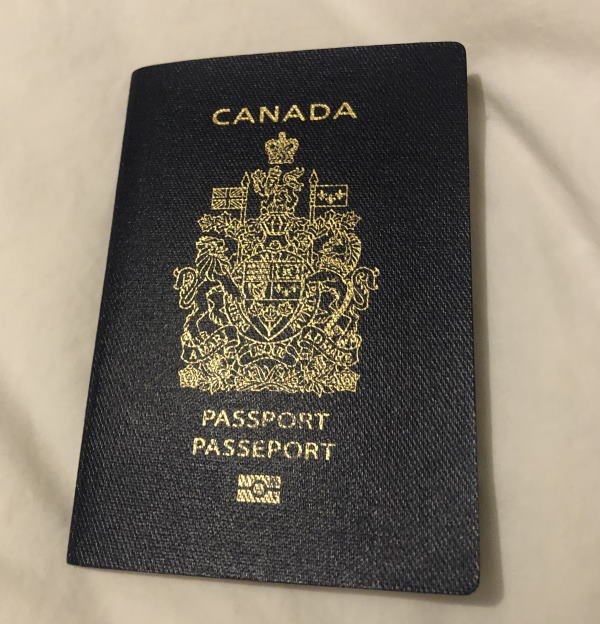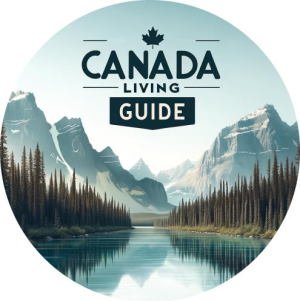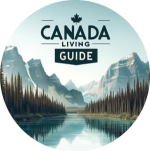Immigrating to Canada: An Overview of Immigration Programs
Thinking about immigrating to Canada?
You’re not alone.
Over two decades ago, my wife and I embarked on a journey from Serbia, Europe, to Windsor, Ontario, embracing the Canadian dream. Like many immigrants, our early days were filled with challenges, yet through it all, our decision to call Canada home has been unwavering.
Sure, there have been tough times and moments of homesickness, but these have never overshadowed the countless rewards and opportunities that life in Canada has offered us.

As we learned, Canada is a land of opportunities, known for its friendly communities, beautiful landscapes, and a high quality of life. It’s a place where people from all walks of life come together, creating a diverse and vibrant society. Whether you’re drawn to the bustling cities like Toronto and Vancouver, the quiet charm of smaller towns, or the tranquility of rural areas, Canada offers a new home full of possibilities for everyone.
When you consider a new life in Canada, imagine a place where you can enjoy the great outdoors, experience different cultures, and access decent and free healthcare and high-quality education.
It might seem like a big step, but remember, thousands of people just like you have successfully made this journey.
As we look into the details of how to immigrate to Canada, keep in mind that this country offers a warm welcome and a fresh start for those ready to embrace it.
Immigrating to Canada: An Overview of Immigration Programs
For those planning to immigrate to Canada, understanding the role of Immigration, Refugees and Citizenship Canada (IRCC) is your first step.
IRCC is the key federal department that oversees immigration, refugee, and citizenship affairs in Canada. It’s not just a regulatory body; think of IRCC as your primary guide and facilitator throughout your journey to becoming a Canadian resident or citizen.
One of IRCC’s most important functions is handling applications for various immigration programs. Whether you’re applying for a work visa, seeking permanent residency, or joining family members in Canada, IRCC is your point of contact.
The process includes thorough assessments to determine your eligibility for the specific program you’re applying for. This ensures that all applicants meet the necessary criteria and that the process is fair and transparent.
After reviewing your application, IRCC makes the final decision. This comprehensive approach ensures the immigration process aligns with Canada’s standards and regulations.
Choosing the Right Immigration Program
It’s important to know that there are many different ways to immigrate to Canada, each with its own rules and benefits.
Canada’s immigration programs are designed for all kinds of people – whether you’re a skilled worker, have a family in Canada, are a refugee, or are starting a business.
These programs help ensure that everyone coming to Canada can find a place that’s right for them. Here, we’ll walk through the different options, making it easier for you to figure out which path to Canada is the best match for your situation.
Express Entry
Express Entry is a system that the Canadian government uses to manage applications for permanent residence under the following federal economic immigration programs: the Federal Skilled Worker Program, the Federal Skilled Trades Program, and the Canadian Experience Class.
According to the website, candidates create an online profile and are scored using the Comprehensive Ranking System (CRS). They are then entered into a pool, from which the highest-ranking candidates are invited to apply for permanent residence. The ranking factors include skills, work experience, language ability (English and French), and education. Check out an official government site for the Express Entry Visa requirements.
Most complete applications with all the needed documents are processed within half a year or less.
- Ideal for: Skilled workers with professional experience, educational qualifications, and language proficiency in English or French.
- Programs included: Federal Skilled Worker Program, Federal Skilled Trades Program, Canadian Experience Class.
- Key Features: Points-based system (Comprehensive Ranking System), faster processing times.
Provincial Nominee Programs (PNPs)
Provincial Nominee Programs (PNPs) enable Canadian provinces and territories to nominate individuals who want to immigrate to Canada and are interested in settling in a specific province.
Each province and territory has its own unique ‘streams’ (immigration programs aimed at specific groups) and sets its own criteria for their PNP. These streams may target groups like students, business people, skilled workers, or semi-skilled workers.
Typically, to apply through a PNP, candidates must first apply for a nomination from a province or territory and then apply to Immigration, Refugees and Citizenship Canada (IRCC) to become a permanent resident.
- Ideal for: Individuals who want to settle in a specific province and have skills, education, and work experience that contribute to the economy of that province.
- Key Features: Each Canadian province/territory has its own PNP with unique streams and criteria.
Family Sponsorship
This program enables Canadian citizens and permanent residents to sponsor family members for immigration to Canada. Eligible family members include a spouse, common-law partner, conjugal partner, dependent children, parents, and grandparents.
The sponsor is required to meet specific income thresholds and must agree to provide financial support to the family member for a designated period.
The application process requires both the sponsor and the sponsored relative to submit applications.
- Ideal for: Canadian citizens or permanent residents who want to bring their family members (spouse, partner, children, parents, grandparents) to Canada.
- Key Features: The sponsor must meet certain income criteria and agree to support the family member financially.
Alternative Immigration Programs and Permits: Expanding Your Options for Moving to Canada
Study Permit
Ideal for: Individuals looking to pursue studies in Canadian educational institutions.
Key Features: Often a pathway to permanent residency, especially when combined with post-graduation work experience in Canada.
Work Permit
Ideal for: Individuals who have a job offer in Canada or are looking to gain Canadian work experience.
Key Features: Can be a stepping stone to permanent residence, especially under the Canadian Experience Class.
Business Immigration
Ideal for: Entrepreneurs, investors, or self-employed individuals who can contribute to the Canadian economy.
Key Features: Includes several programs like the Start-Up Visa Program, and Self-Employed Persons Program.
Refugee and Asylum Programs
Ideal for: Individuals who are fleeing persecution, conflict, or human rights violations.
Key Features: Focus on humanitarian and compassionate grounds.
Refugee and Asylum Programs
Ideal for: Individuals who can provide care for children, elderly, or those with medical needs in Canada.
Key Features: Pathway to permanent residence after meeting work experience requirements.
As we have explored, standard immigration programs like Express Entry, Provincial Nominee Programs, and Family Sponsorship are among the most popular ways to obtain a Canadian visa. However, these are just a few of the many paths available. There are additional, less-known routes to obtain a permit or move to Canada temporarily, tailored to specific situations that might suit certain individuals’ needs.
For a comprehensive list and detailed information on these alternative methods, it’s best to refer to the official Canadian immigration website.
What is the Easiest and Fastest Way to Come to Canada?
Determining the “easiest” way to immigrate to Canada can vary greatly depending on an individual’s circumstances, qualifications, and goals. However, some pathways are generally considered more straightforward due to either less stringent eligibility criteria or faster processing times.
It’s important to note that what might be the easiest option for one person may not be the same for another, as each immigration case is unique. Factors such as your age, education, work experience, language proficiency, and connections to Canada (such as job offers or family) play a significant role in determining the most suitable pathway.
Since there is no simple way to immigrate to Canada, it is recommended to check the latest requirements and consult with the experts or the official Canadian immigration website for the most accurate and personalized advice.
According to this company, the fastest and easiest way to immigrate to Canada is through the Express Entry problem.
Immigrating to Canada – Our Story
From my perspective, obtaining a visa and Canadian passport today appears to be much simpler and faster compared to when we applied back in 2000. We didn’t have online guides, instructions, tips, or checklists on how to immigrate to Canada.
Initially, my eligibility was based on my degree in mechanical engineering and relevant work experience. Our application process was extensive, involving two interviews, numerous questions and documents, and a medical examination.
Even though the Canadian embassy is in our hometown of Belgrade, we had to send all our documents, including the additional required ones, to Vienna, Austria for visa processing. Meanwhile, our interviews were conducted in Belgrade, Serbia. This contributed to an extended three-year wait before our acceptance.
The thought of giving up crossed our minds, but due to unfortunate circumstances back home, we resolved to proceed with the move. The lengthy processing time was a source of considerable frustration for me, particularly seeing others get accepted in mere months. Surprisingly, my degree in mechanical engineering and my uncle’s sponsorship did not seem to fast-track our application.
Thus, my message to everyone aspiring to immigrate to Canada is this: don’t give up!
Persistence is key, and your efforts will eventually pay off.
(note: This article is provided for informational purposes only and should not be construed as legal advice. It is strongly recommended that you consult with a qualified legal professional.)
Related Articles
-

How to Become a Canadian Citizen: Benefits and Rights
If you’ve immigrated to Canada or currently hold permanent resident (PR) status, you’re on the brink of an incredible journey.… Read more
-

Immigrating to Canada: An Overview of Immigration Programs
Thinking about immigrating to Canada? You’re not alone. Over two decades ago, my wife and I embarked on a journey… Read more
-

Comprehensive Checklist of Things to Bring to Canada
Moving to Canada as an immigrant involves detailed planning and preparation. Ensuring you have everything you need for this significant… Read more







